The usual format again, we have here eight wines consumed, in fact relished, at home during the first part of September. Actually, one of these is a cider (Czech), so seven actual wines (ha!), which came from Alsace, Arbois, Alto-Piemonte, Catalonia, Eastern Hungary, South Australia and Vienna.
“JOHANNA” 2017, UTOPIA CIDER (Josafat Valley, Czechia)
Eva and Ivo Laurin farm orchards near Tábor in the north of the Czech Republic, around an ancient fortification called Sudkuv Dul. This is a mixed farm, perhaps untypically including carp, hens and bees. The whole philosophy is as natural as it gets. The cider apples include old Czech heritage varieties (and the trees are unusually old as well, some 80 years), and some English varieties planted to see how they go, all on two-hectares of orchard. There is no spraying, just horse manure. The ciders are fermented to dryness and all of the named cuvées are aged in well used 225-litre casks for twelve months. They bear the names of women who have inhabited Fort Sudkuv Dul over the centuries.
Utopia ciders are perhaps the closest pure ciders to wine I’ve ever tasted (putting aside those ciders such as Shobbrook or Charlie Herring, where a touch of red wine is added to the apple or pear juice). “Johanna” is mellow and golden, like an autumnal evening. It is clearly made from apples, almost as if slightly bruised, and does have a bit of bite, but it is also unquestionably a little different. I think it is an extremely versatile cider, food-friendly and one which should appeal to wine lovers…perhaps even more than your average cider drinker.
Utopia Ciders are imported by Basket Press Wines.
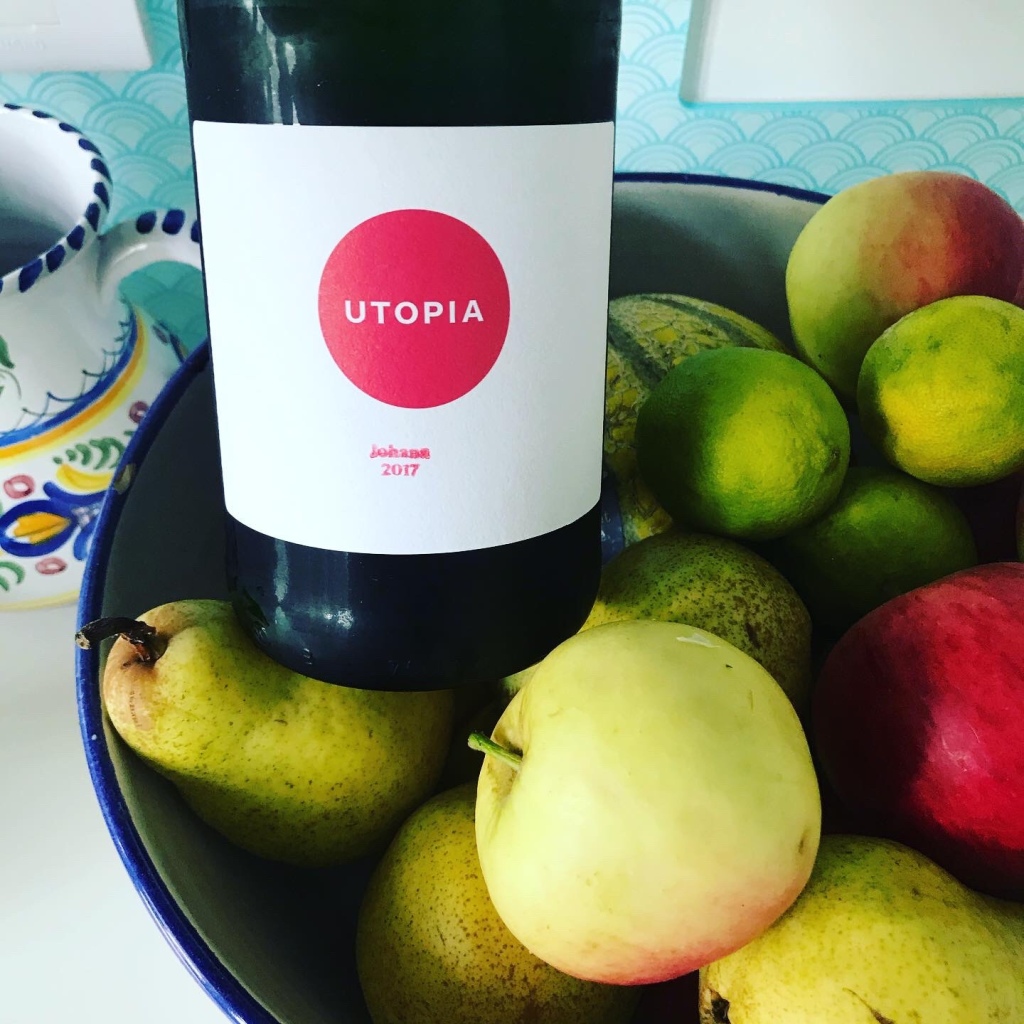
“TOUT NATURELLEMENT PÉTILLANT” 2019 , BECK-HARTWEG (Alsace, France)
Florian and Mathilde Beck-Hartweg farm eight hectares at Dambach-la-Ville in the increasingly exciting Bas Rhin, the northern half of the Alsace wine region. They are both in their 30s, but they are the 16th generation of the family at a domaine which was originally founded in the 1500s. Their approach is biodynamic, with total respect for nature and their terroir. Both of them are fans of Masanobu Fukuoka’s wider philosophies (Fukuoka, who died in 2008, was a proponent of natural farming, including “no till” and “no herbicide” methods which are often misleadingly described as “do nothing farming”). The terroir is something rather special as the soils around Dambach sit on pink granite.
This petnat comes from vines planted at the foot of the slopes, for this cuvée 40% Pinot Noir with a similar proportion of Muscat and 20% Pinot Gris. It’s an unusual combination which undergoes a light maceration before bottle fermentation, which gives beautifully fine bubbles and a firm spine. It’s bottled with no added sulphur, which surely enhances both the overall freshness of this 2019, and the vibrant fruit. The finish has an intriguing bitterness, which I like a lot. It would make a great aperitif, but we drank it with chick pea flour frittatas and salad. Of all the petnat wines I’ve drunk this year, this is definitely one I hope not to forget to order once the next vintage becomes available. Loved it.
Imported by Vine Trail.
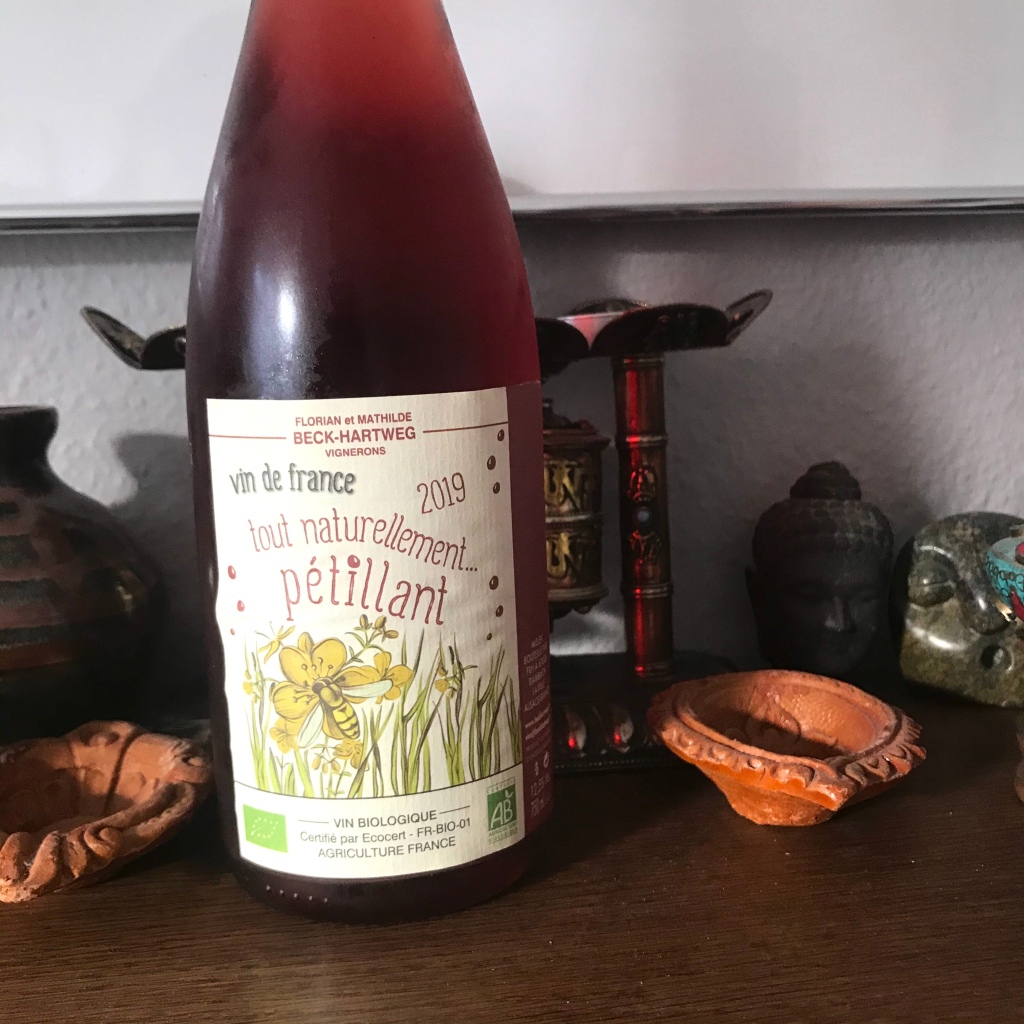
“ALÉAS” 2017, DOMAINE LES BOTTES ROUGE (Jura, France)
A few years ago Jean-Baptiste Ménigoz was a quiet vigneron working just outside Arbois, in a village, Aubergement-le-Petit, which nobody visited…at least before Bottes Rouge hit the bars of Paris, London, New York and Tokyo. He’s certainly one of a group of seven or eight young Arbois producers who have attained their fame via the showcase for the region’s natural wines that is Le Nez dans Le Verre (held annually, except in times of plague, since 2011). There are only 4ha at this small domaine, which I think are all still rented, but the vines do have the advantage of being pretty old.
In 2017 the region suffered from considerable frost damage, affecting most producers to some extent, as in Eastern France generally. The result for Jean-Baptiste was that he was forced to make a single red wine cuvée. The result, however, was a triumph. This wine is smooth and fabulously fruity (total glou) but with a savoury, umami, note taking it that one step beyond. Light as it tastes, its 13.5% alcohol gives it a little weight and presence, albeit as surreptitiously as one could imagine. It went down very well.
I think this may have been a purchase from The Solent Cellar whose owners are very big Jura fans, so whilst they might not have this cuvée any more they will have something to take your fancy (you may need to ask!). Imported by Les Caves de Pyrene.
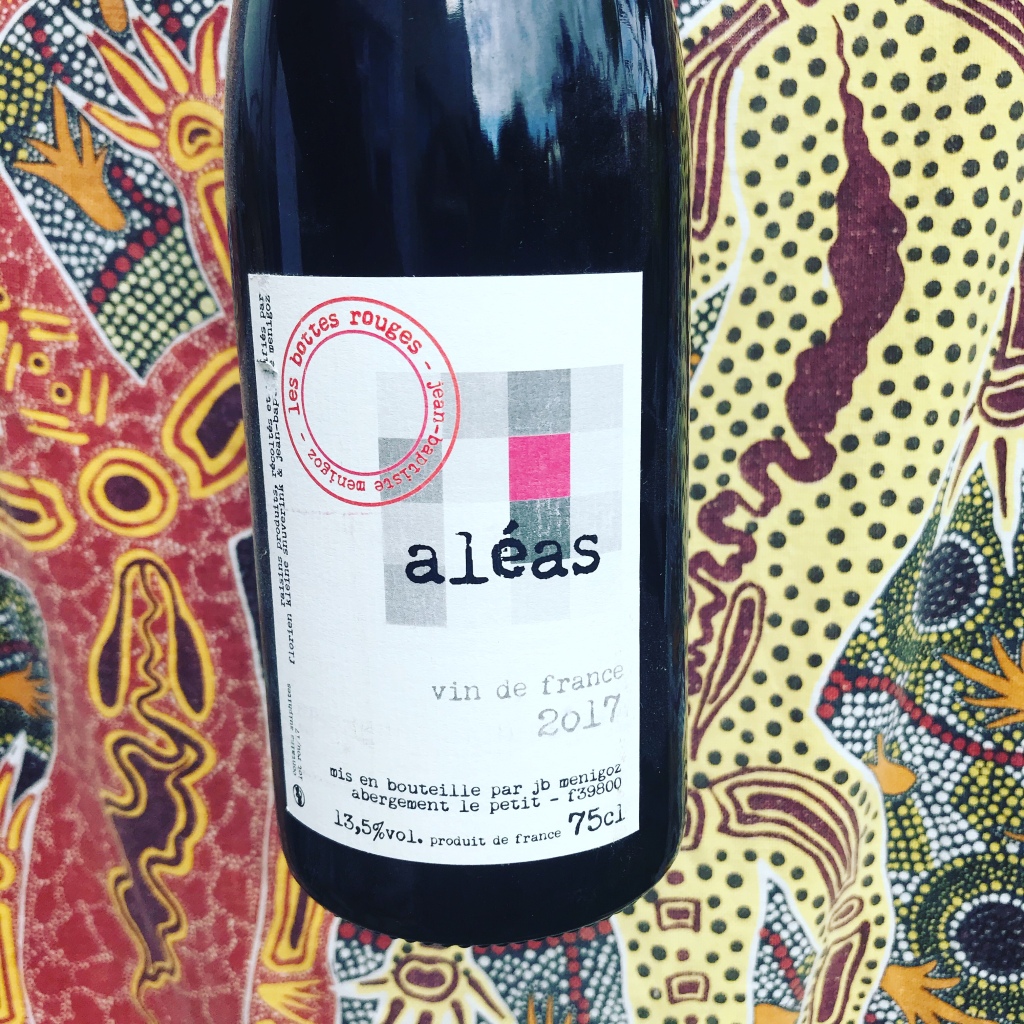
CAREMA CLASSICO 2016, PRODUTTORI NEBBIOLO DI CAREMA (Piemonte, Italy)
I suppose it cannot be a total surprise that as the famous wine regions of Piemonte, Barolo and Barbaresco, become increasingly expensive and sought after by collectors priced out of Burgundy, the lesser sub-regions are starting to get noticed. Whether we are of the view that there were always bargains to be had outside the two “B”s (as I am), or whether we think it’s just desperate hype, we are definitely seeing a lot more of names many of us only vaguely knew. To be fair, Roero began to get noticed a decade ago, and DOCs like Carema and Gattinara have always been there, in the background.
The Carema co-operative was founded in 1960 with around a dozen members (there are now more than eighty). They make wines which are remarkably good if you have never tried them, their reputation being similar (to a degree) to the more famous Produttori of Barbaresco. I believe the Classico is 100% Nebbiolo (85% is the legal minimum for the appellation). Fermentation is in stainless steel with twelve days on skins. Ageing is 12 months in tank, then six months in bottle.
The colour has that lovely brick orange at the rim, garnet in the centre. The bouquet is spice (mostly nutmeg) and orange peel. The palate does have red and dark fruit but is much more redolent of spice and herbs. There’s definite structure (I also bought some 2016 Riserva which I will definitely keep) so it will last for sure, but it was very enjoyable now. Would quite like some more for autumnal dishes.
Also from The Solent Cellar, this time via Astrum Wines. I’ve noticed that independents like Solent Cellar are beginning to stock a few Nebbiolo wines from outside the two classic zones. Time to explore.
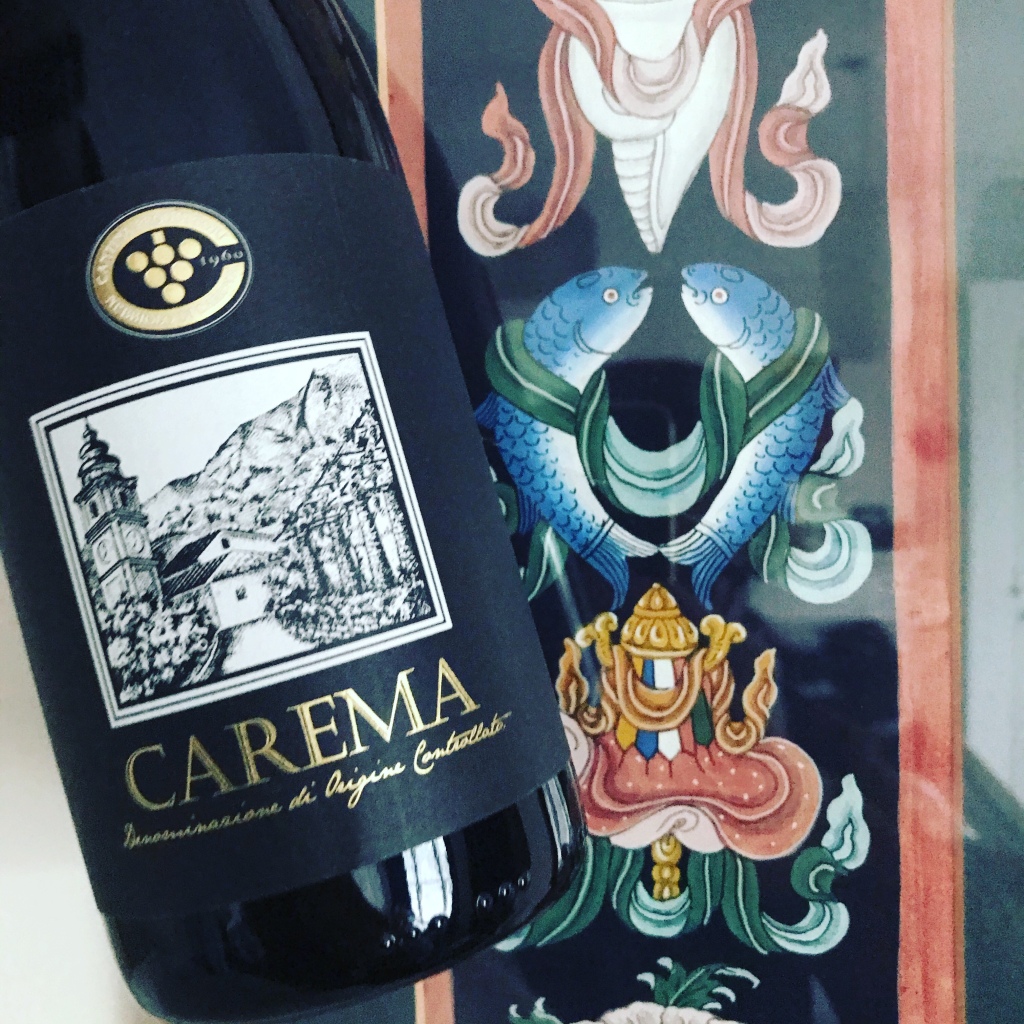
SUMOLL RESERVA FAMILIA BLANC DE NOIRS BRUT NATURE, CLOS LENTISCUS (Catalonia, Spain)
It sometimes seems as if the most exciting Spanish sparkling wines are no longer labelled “Cava”. I guess we could all come up with a few names responsible for that shying away from this designation, but in the UK at least, it was the desire of supermarket giants to drag down prices (first of Cava and then Prosecco), which led to producers going along with it and of necessity thereby trashing quality for price, and ultimately harming the Cava brand itself.
This is a wonderful family producer based at St Pere des Ribes, founded in 1939. They make wine as naturally as they can. They are remarkably unusual among Spanish producers of Metodo Classico bottle fermented wines in using indigenous yeasts, and honey from their own bees to make the dosage for the second fermentation. If that were not enough, they use the remarkable, rare, but in my opinion wonderful, autochthonous grape variety, Sumoll, for this magical Blanc de Noirs.
The colour is not so much tinged with pink, but orange, certainly with this bottle where the base vintage was 2013. It was disgorged in February 2017, so it has seen a further three-and-a-half years post-disgorgement ageing. With zero dosage I wondered whether I had left it a little too long (my cellar gobbles up sparkling wines, which live in the furthest, darkest corner (common sense)). I needn’t have worried. It sings with bright biodynamic red fruits, but with such an individual character. Its philosophy and choice of variety (which, like Pinot Noir, truly seems to thrive for both red and sparkling wine) makes it a wine of real personality, not remotely like a simple Cava from the well known enterprises in the region.
Clos Lentiscus wines are not easy to source in the UK. In fact a friend has brought me some back from the region, and this bottle may have come from Barcelona. But the great little Spanish deli in Dalston, Furanxo (only five minutes from Newcomer Wines) has had bottles the past two or three visits (do check first but you’ll find their small range of wines, many (but not this one) from Otros Vinos, is worth the walk and an extra-large suitcase).
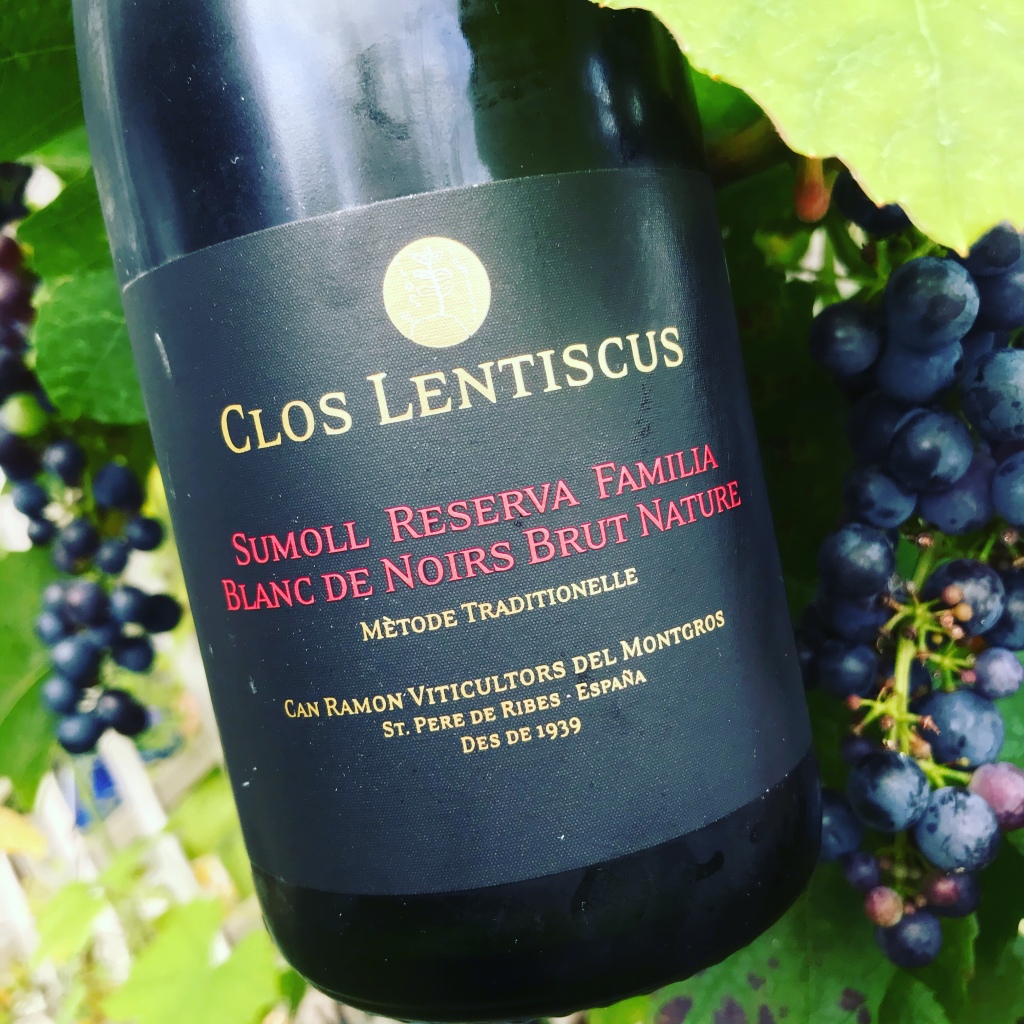
A CHANGE OF HEART 2018, RÉKA-KONCZ (Eastern Hungary)
Here we go again…Annamária Réka, who makes wines at Barabas near the Ukrainian border, has appeared pretty much every month during this pandemic era, but I make no apology for that. Each wine is new, and none have yet failed to reach the same heights as the previous bottle.
This wine is her red, made from Kékfrankos (aka Blaufränkisch). The unique soils on which it is grown are loamy loess underlain with volcanic ash which has cooled and hardened to form perlite, often described as a sort of volcanic glass. There is a two-week maceration, 20% whole bunches, but the methodology is simple and hands-off. The result is a wine which sings of bright red cherries, like a rousing chorus. The vibrant acidity just lifts it to a crescendo. At 12% abv it is perfectly balanced, so darkly drinkable that one wishes it came in magnums.
There were a mere 711 bottles in the 2018 vintage. I bought the 2019 the other day, and there are, it seems, a more reasonable 1,633 bottles from that vintage. Still, I suggest getting in early to avoid disappointment. From Basket Press Wines. Restaurant/sommelier interest in Réka-Koncz does make it harder for any tardy private customers who have never used starting blocks.
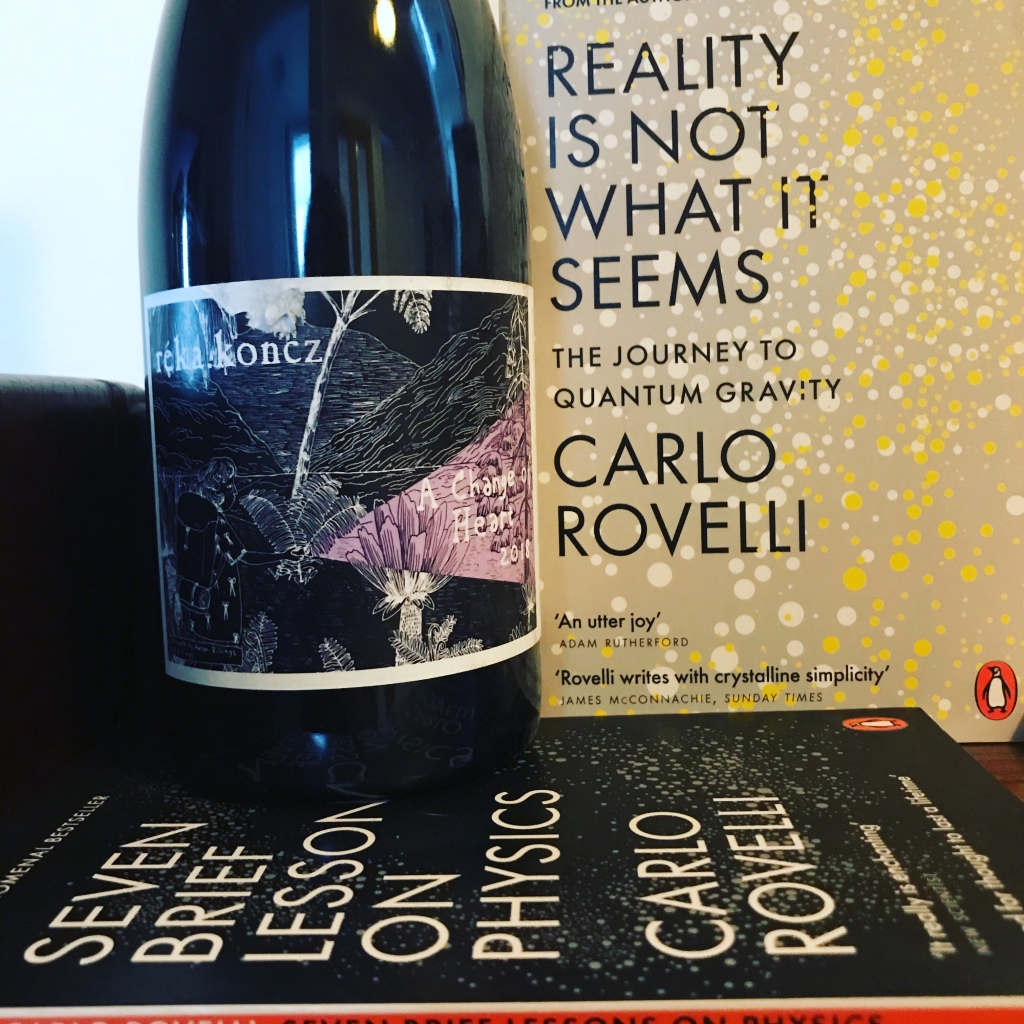
SEASIDE CABERNET FRANC 2018, GEYER WINE CO (McLaren Vale, Australia)
Dave Geyer set up his wine company in Tanunda, in the Barossa Valley. This is another guy who as well as farming chemical free tries to follow a philosophy of not tilling the soil where possible. Not using a plough or rotovator may be quite unusual but an increasing number of farmers (not just in wine) are looking at the advantages of this system.
The Seaside Cabernet Franc, however, is (so I am told) not from Barossa. It comes from the cooler Sellick Hills (Adelaide Hills/McLaren Vale Region). True to form the vinification is a little strange. The first half of the blend is straightforward enough, a skin ferment for ten days. The other half of the blend was a Rosé, back blended before bottling.
The result in some ways is astonishing. The bouquet is discernibly Cab Franc, violets to the fore, but so “lifted” is the scent that it hits the very top of the nasal passage. Very refined, sweet almost. The palate is a cracker of ripe cherry fruit with bright red fruit acids hitting like a ray of light (excuse me, listening to some Hawkwind and getting carried away). It’s an easy-to-drink, medium-bodied wine where the 12.8% abv on the label for once seems spot on accurate. Joyful stuff.
I’ve enjoyed this wine regularly at tastings over the past few years but I am so glad I finally got around to buying a bottle. Definitely one to buy again. Imported by Nekter Wines.
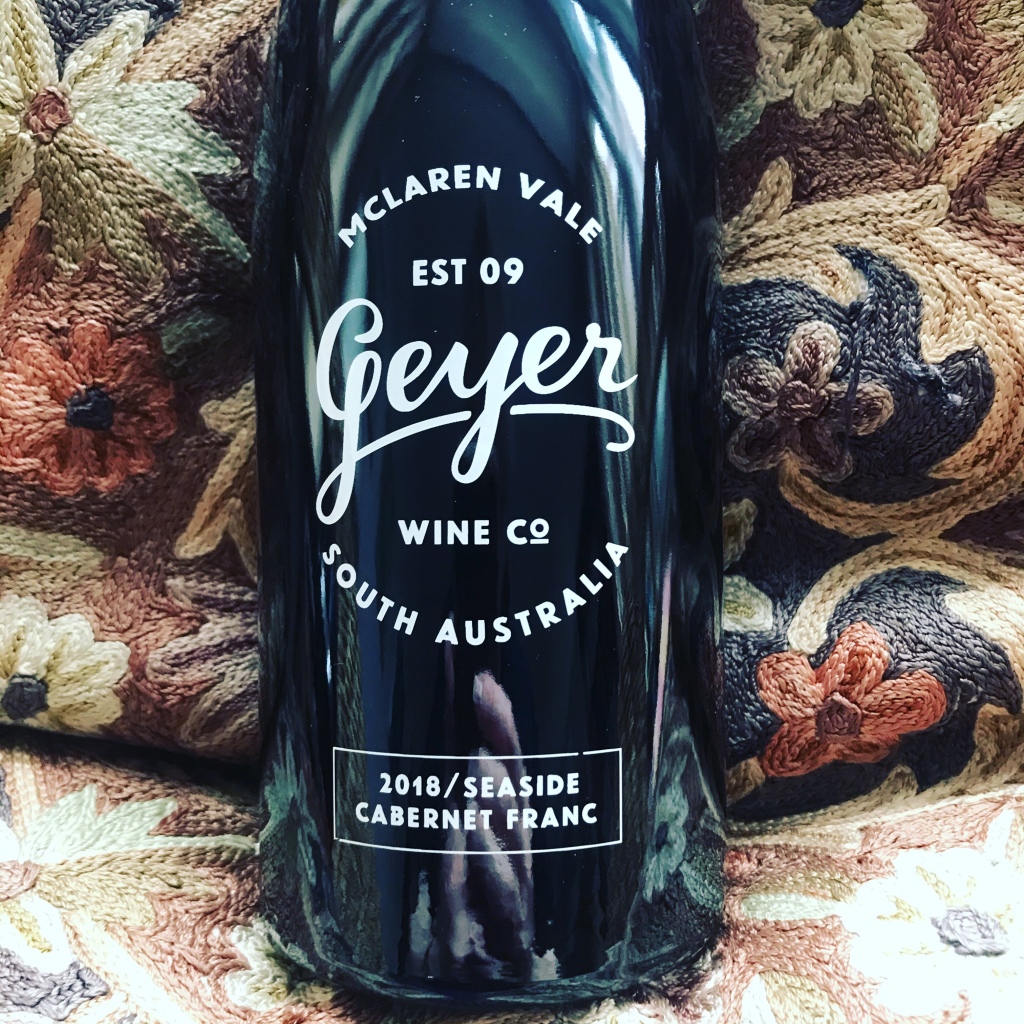
“RAKETE” 2018, JUTTA AMBROSITSCH (Vienna, Austria)
Jutta and her partner farm a few precious hectares on the slopes on the edge of Vienna which comprise the most beautiful near-urban vineyards I know. A highlight of my visits to the Austrian capital is always to take a bus from outside Heiligenstadt Station, along the Grinzinger Strasse and up to the Gnadenkapelle in the hills above the city. After coffee and cake at the chapel cafe, the path by the bus stop leads downhill, first through silent woods, then to the vineyards which spread from the Nüssberg hill, east towards the Danube and west to the low slopes above Grinzing. The popup heurigen which dot the route in summer offer perfect refreshment stops along the way, and as it’s mostly downhill the odd glass won’t hurt.
Jutta is one of a bunch of truly intuitive women winemakers (like Annamária Réka, Victoria Torres, Veronica Ortega, Stephanie Tscheppe-Eselböck and the Renner sisters…I could go on), who are no less on top of the technical side of making clean and pure natural wines. She is also a fan of the traditional Viennese field blends, Gemischter Satz, and this wine is indeed a red field blend. It’s based on Zweigelt, but the other varieties here include St Laurent, Blauburger, Rotburger and some Merlot, all co-planted at Kahlenberg (north of Nüssberg, close to the river as it swings northwest to Klosterneuburg, with its famous abbey).
Grapes underwent four days of maceration in stainless steel, the only medium used for both fermentation and a short period of ageing. However, this natural wine was neither fined nor filtered and a bit of a shake before drinking (or lay it down in the fridge) will bring out the lees texture. The result is like drinking pure, pressed, cranberry juice, enhanced by those fine lees. It may be a pale red, but it has presence, poise and perfect summer fruit. It would certainly rank as one of my top summer wines this year, even though the 2019 became available a month or so ago.
Jutta’s wines are imported by Newcomer Wines from whom I bought this 2018, although I did (of course) buy some 2019 as well, from Littlewine.co.
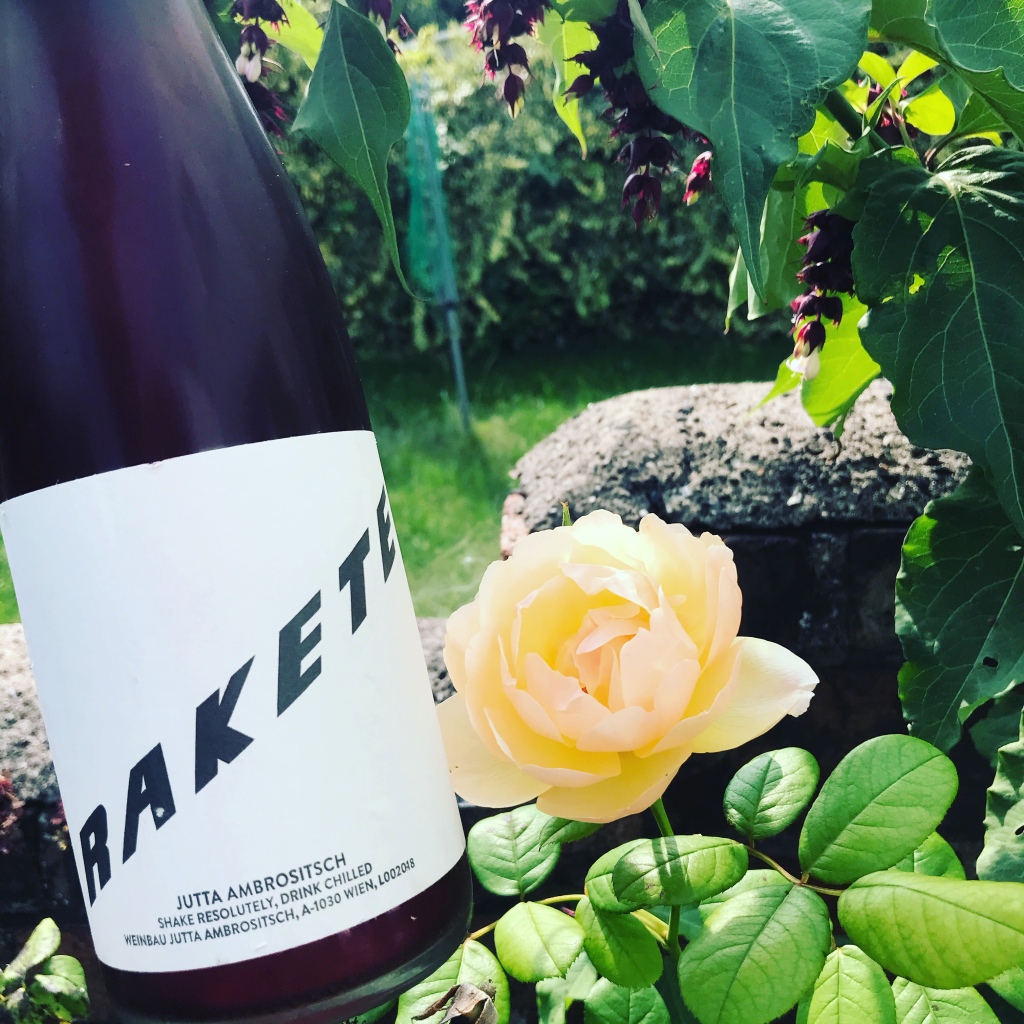
See you soon, I hope, for Part 2.

Hi David, some of Clos Lentiscus’ other wines can be found at Ancestrel Wines in Bermondsey! I think they might be the UK’s sole importer (could be wrong). – Darryl
LikeLiked by 1 person
Hey Darryl, that’s really useful info. Thanks for that.
LikeLike